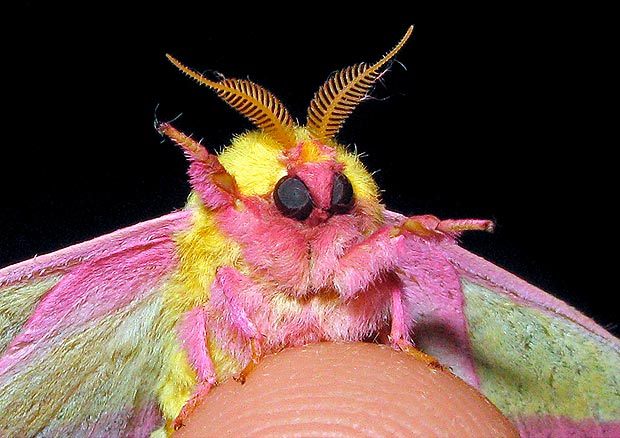
As human beings, we have a tendency to attribute our own characteristics, thoughts, and feelings to other animals, both domestic and wild. This is called anthropomorphism or personification and has been a staple of popular culture – especially literature – for centuries. Humans are mammals, so comparing ourselves to other mammals isn’t that far-fetched. However, interpreting different actions of smaller animals, such as insects, as emotion-driven can be rather misleading and perhaps even controversial.

The question of whether or not insects feel pain and related sensations has been the focus of many scientific studies in the past few decades. Scientists are actively investigating whether insects can feel pain and respond to it, although concrete evidence is still being sought. Indirect evidence suggests that insects may possess this ability. But just because something can’t be proved, it doesn’t mean that it isn’t true.
What We Know About the Nervous System of Insects
Many will try to dispute the idea of arachnids, a subspecies of insects, suffering from headaches by stating that they don’t have a head, to begin with. This, of course, is false; spiders, for instance, have cephalothoraxes, which combine the head with the thorax. Other insects have more clearly defined heads with antennae, pronounced eyes, and mouth-like features. Consequently, just like humans, insects eat things, smell things, taste things – and feel things.
This allows them to react to injuries and stimuli, as well as sense potential threats and avoid them instantaneously. Moreover, it’s common knowledge that some species of insects can see certain stimuli that humans can’t. Bees have the ability to detect the polarization of light, whereas butterflies possess the ultraviolet vision. What with pain being an emotional reaction, whether insects are designed to feel pain depends on whether they have the ability to sense different emotions.

There are a few other important similarities between the human brain and that of insects. First of all, it’s been proven that some invertebrates produce endorphin, the “happiness hormone” that alleviates the sense of pain and anxiety. Then there’s the fact that humans can get poisoned by insecticides intended for home use, which are essentially based on nerve gasses. This suggests that the neural transmission mechanisms in our bodies bear at least some similarity.
What We Know About Pain in Mammals

Pain is a somewhat relative concept even for mammals. This is mainly due to the fact that human brain doesn’t have a dedicated network of pain receptors. Instead, the only reason we feel pain is because that’s the way our brain interprets a large amount of sensory signals emitted by neurons.
It’s always easier to detect pain in humans because they can tell you if they’re having a headache or a migraine. Even if they don’t say anything, a routine brain scan can recognize the presence of a migraine in the human brain based on the distinctive wave-like pattern of inactivity and activity. Animals can’t tell us if they’re experiencing any pain, but some of them do produce sounds in reaction to different stimuli.

By definition, pain is very subjective. To illustrate this, you just have to take a look at how the exact same stimulus will cause a considerably different reaction in almost any two people. It’s the most unpleasant of feelings whose purpose is to exert a reaction that will result in us eliminating whatever’s causing this sensation. Furthermore, pain conditions us to remember its source and subsequently avoid it.
What We Know About Fruit Flies Regarding Pain
This very purpose of pain – to help us learn about potential dangers and steer clear of them – leads us to our next subject: fruit flies. The majority of insight we have into the inner mechanisms of insects comes from extensive research of different sorts of drosophila. Observing fruit flies, scientists have noticed that their default response to immediate danger is to roll over the parasites that are causing it. Whether it’s a larva or a full-fledged insect, they will always roll over towards what’s hurting them.

Fruit flies have what is known as a homologous limbic system, the region of the brain responsible for emotions and corresponding behavior. As soon as this region recognizes threats, fruit flies tend to react by staying out of the center of the room that they normally gravitate towards, and remain closer to the walls. They have also shown to be responsive to benzodiazepines in much the same way as humans are.
There’s also proof that the brain of fruit flies has a built-in reward system. For example, with the increase in sexual activity, the levels of neurotransmitter called neuropeptide F in male flies tend to increase. On the other hand, sexual deprivation decimates the neuropeptide F levels. When the latter happens, flies show higher affinity towards ethanol. To put it simply, a lack of sexual activity leads male flies to drown their sorrows in alcohol. Sounds familiar, doesn’t it?

We also know that fruit flies have the so-called “white” gene, which seems to control how threatening they consider specific situations. The mutations of this gene cause flies to exaggerate the seriousness of certain events, turning them into proper “drama queens.” They also seem to be quicker in learning to avoid sources of distress; flies without this genetic mutation need more time for this process. So, even if there’s no clear scientific proof that flies have feelings, the behavioral proof is there in abundance.
Do Spiders Get Headaches?
Due to their simple nervous system and lack of a centralized brain, it is highly unlikely that spiders experience headaches as humans do. They rely on their basic nervous system for essential functions such as movement, feeding, and reproduction, lacking the complex neural pathways associated with headache sensations. Spiders, unlike mammals, do not heavily rely on vision and have limited sensory stimuli. Their navigation and prey capture primarily rely on touch and vibration receptors. Since headaches typically result from complex brain activity, sensory overload, stress, or physiological imbalances, it can be concluded that spiders do not likely suffer from headaches.
Connecting the Dots
The incidental evidence we have so far signals that there may be truth to the idea that insects have the ability to feel pain and react to it. Scientists, however, are still persistently trying to back this idea up with more concrete proof by comparing the behavioral patterns and chemical impulses of insects to those present in humans. Still, this is enough for us to find it difficult to dismiss the idea as nonsensical.
After all, insects are an integral part of our ecosystem and contribute greatly to the relative stability of life on the planet. Yes, we have a natural instinct to eliminate them when we sense they pose a serious threat to our health – be it malaria, Lyme disease, or the Zika virus. But until we know for certain whether they have emotions like us, we have to give them the benefit of the doubt and treat them like we would any other living creature. It is our duty to help them survive because it will help us survive, too.

Onto another question about animal brains: do animals work out?
Hi! We’re Team Neuro, aficionados of all things brain-related, from creativity to working out. With backgrounds in art, science, and athletics, we love delving into all the potentials of the human body.
We also created the world's first sugar-free nootropic caffeine gum that utilizes the effects of caffeine and L-theanine, made to help you optimize your mind — anywhere, anytime. Find out more here.





























